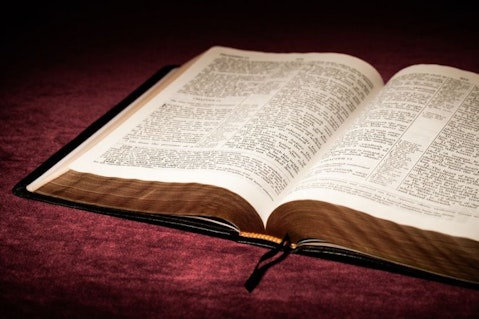With the many differences in Bible translations out there, many look to the best unbiased, most literal and trusted Bible translation in circulation to reground themselves in their faith.
To answer that loaded question, we need to scrutinize the different methods of translation that exist, and before we dive into that, we need to gauge language as a whole. Every single language is a unique form of communication unto itself, each with its own arbitrary set of rules and regulations that allow us, humans, to express everything from the unrelenting desire for pizza to the burning curiosity about extraterrestrial life. That means that every language has a novel way of communicating certain ideas with the appropriate feeling and emotion, for each has its own form of figurative language and linguistic nuance that enrich it with a different flavor. But how is this relevant to translating a piece of text from one language to another?

Merydolla/Shutterstock.com
It is extremely relevant, because all of the observations we have made so far with regard to language mean that there are two polarized techniques of translation: you can either translate it literally, mechanically converting each word into its closest available counterpart in the language you wish to change it to – a method known as formal equivalence – or you can translate “ideas”, so to speak, placing more significance on communicating the intended interpretation rather than the superficial meaning – known as dynamic equivalence. However, as the definitions render abundantly lucid, both are problematic in certain ways, and therein we see that there is no most trusted Bible translation. If we go with the first method, we see that the essence of the Bible is in danger of being lost and that the rigidity might distort ideas, but in the second we note the influence on the original meaning of the translator, for he or she attempts the subjective of a task of translating the abstract. The only question we can ask ourselves is: “which version of the bible is closest to the original?” or perhaps: “what is the most accurate translation of the Bible in circulation today?”
These questions can be answered in a number of ways, and there is, in fact, no right answer. The way this article will attempt to answer it will be by referring to the most literal and most authentic translations out there. We have compiled this list by conducting online research on the book that fulfills the criteria of being the most accurate Bible translation according to scholars. We referred to sources such as Christianity.com, Olive Tree and Life Hope & Truth among others. For further research and more perspective, we recommend checking out our article 5 Best and Most Accurate Bible Translations According to Scholars. But if you’re a beginner who simply wishes to learn more about basic Christian ideas, you might want to check out this article on the 5 Easiest Bible Versions to Read and Understand for Beginners.
In alphabetical order, this is our list of the best unbiased, most literal and trusted Bible translation in circulation:
6. American Standard Version (AMV)
This translation of the Bible, of which the complete translation of both Testaments was released in 1901, and is greatly used in the United States. It also became the basis of multiple other translations, two of which make their way on our list.

Copyright: olegdudko / 123RF Stock Photo
5. English Standard Version (ESV)
This literal translation was first published in 2001, though it has undergone a fair few revisions since then. It uses some gender-neutral language, but for the most part, it is thoroughly rigid.

Copyright: stockbroker / 123RF Stock Photo
4. King James Version (KJV)
The oldest and probably the most famous translation on our list of the best unbiased, most literal and trusted Bible translation in circulation, the King James Version was released in the early 17th century. It is rigorously done but contains a few minor mistranslations.

Copyright: halfpoint / 123RF Stock Photo
3. New American Bible (NAB)
First published in 1970, the New American Bible is approved by multiple religious authorities, notably the Episcopal Church of the United States.

Copyright: sidelnikov / 123RF Stock Photo
2. New King James Version (NKJV)
This updated version of the original preserves the literary significance of the King James version, but has brought the archaic language up-to-date and has greater historical accuracy.

DmitryCh/Shutterstock.com
1. New American Standard Bible (NASB)
The last spot on our list of the 6 best unbiased, most literal and trusted Bible translation in circulation is cemented by the New American Standard Bible, a translation that was published in various stages, and that now holds the confidence of many Christian scholars.

Pixabay/Public Domain





